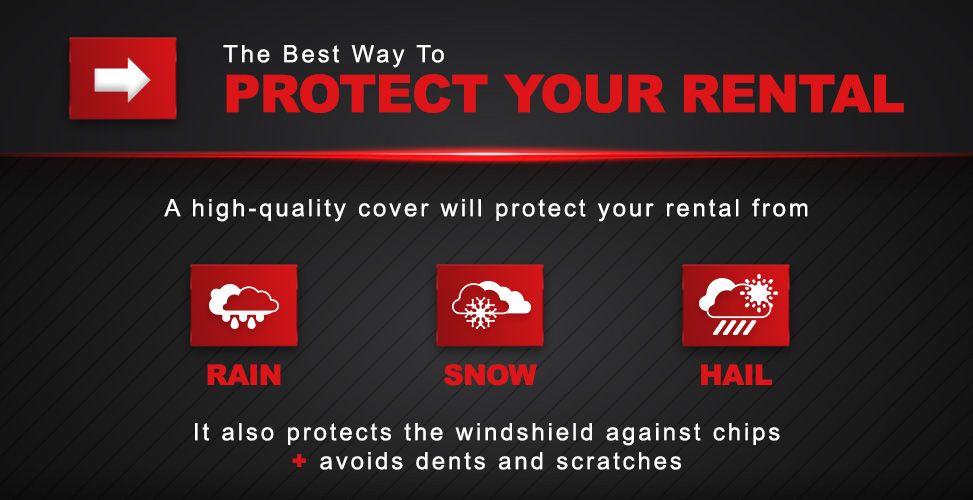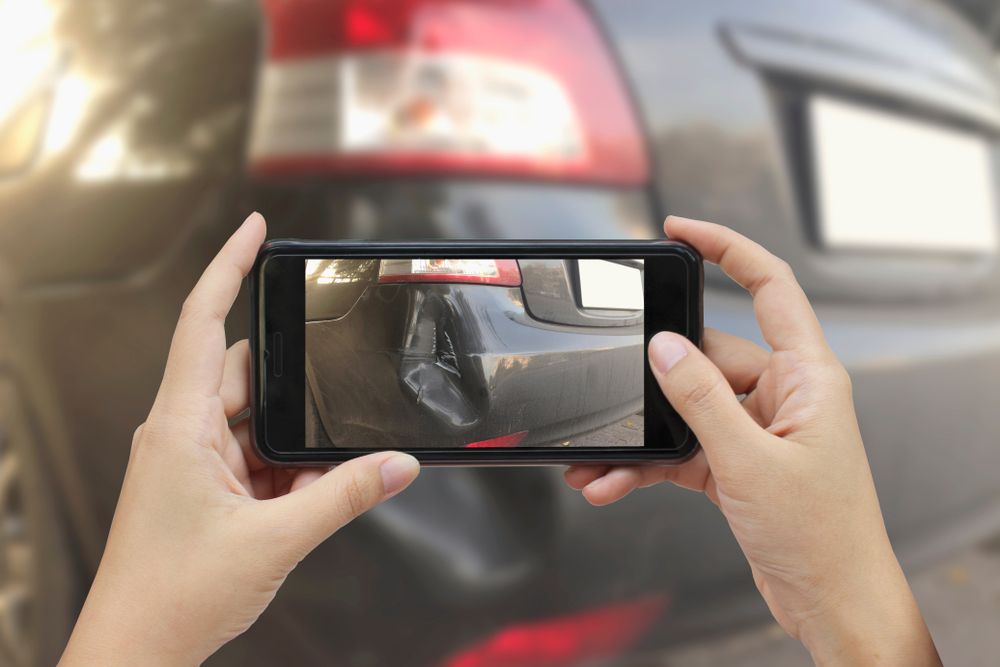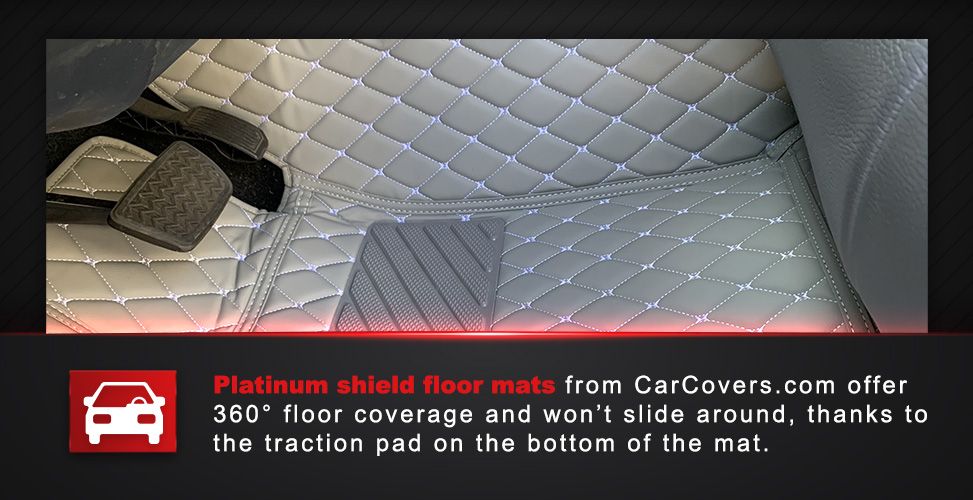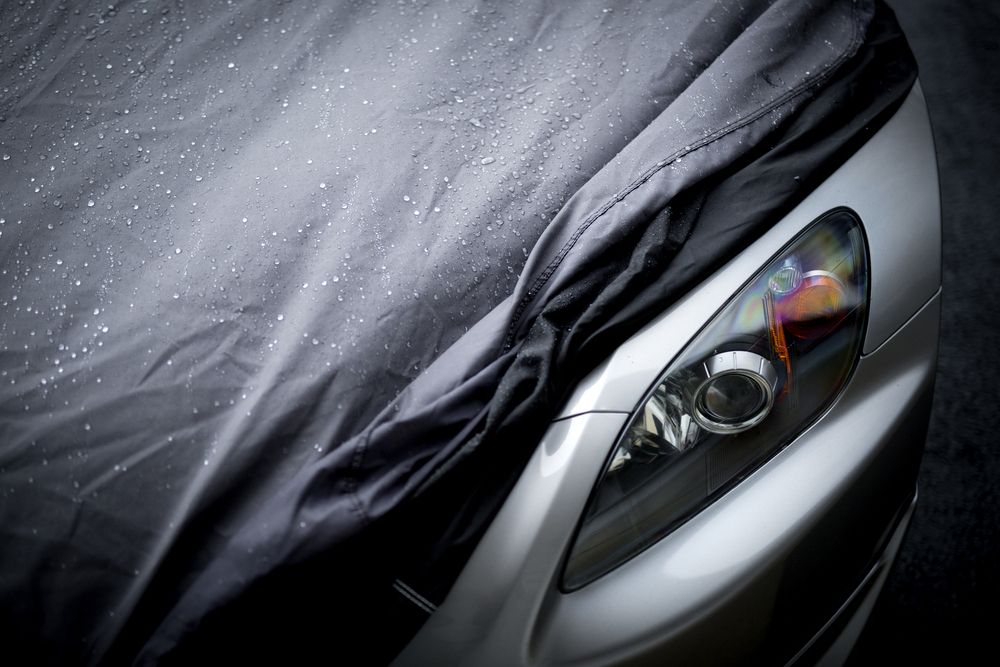
Rental Car Tips: How to Protect Your Rental Car from Damage
Whether you’re renting for a vacation or the long-term, protecting your rental car is critical so you can return it in the same condition you received it and avoid hefty repair fees. Protection against damage begins the second you get the keys to the vehicle. You must consider the windshield, tires, interior, and paint job of the car and how you’re going to maintain them while it’s in your possession. To keep your rental in mint condition, here are a few simple tips to help you prevent damage and ensure you return the vehicle without incurring additional costs.
Invest in a Protective Cover
Even if you’re only renting for a couple of weeks for a road trip, it’s a good idea to purchase a protective cover for the vehicle. Weather-resistant car covers keep your rental car safe when you stop over for the night, especially if there are no indoor parking facilities on your route. A high-quality cover keeps rain, snow, and hail off your car, protects the windshield against chips, and avoids dents and scratches.

If you’re living or traveling somewhere warm where the sun is always shining, it’s worth purchasing a car cover that protects from UV rays to keep the vehicle’s interior cool when it’s sitting outside for prolonged periods. In windy regions, look for a cover with a gust strap for additional security.
CarCovers.com semi-custom covers are made from three layers of lightweight polyester to repel moisture, reflect UV rays, and provide padding against physical damage. The covers come with a convenient storage bag so you can keep it in your rental car’s trunk, and the elastic hem enables you to install it easily and remove it quickly.
Shop Our High Quality Car Covers
Get Insurance
The best way to ensure your rental car is protected? Invest in rental insurance. Knowing that any repairs to the car are covered if the worst happens removes the pressure and allows you to enjoy your vacation or road trip.
It’s not always necessary to purchase insurance from the rental company. Often your private car insurance covers you when driving a rental car. If it doesn’t, there’s a good chance that your credit card does. Be fully aware of your coverage options before arriving at the rental dealership, so you aren’t overpaying for insurance if you already have it.
Perform an Inspection Before Leaving the Lot
The first thing you should do upon receiving your rental car is to perform a meticulous inspection of the vehicle before driving it off the lot. This includes the exterior finishes, the windshield, windows, trunk, interior seats, and dashboard. Don’t make the mistake of being so excited to begin your road trip that you gloss over minor blemishes on the vehicle that could come back to bite you later when you try to return it.
It’s also a great idea to have the clerk inspect the car with you before you take possession of it. If a representative from the agency takes part in the inspection and documents all noticeable damage, you can feel confident that you won’t be liable for it later. It’s important to inspect the car before you sign anything.

Take Photos of Existing Damage
If a rental agency representative is not present during your inspection, take photos of everything. Whether it’s a slight scratch or a dent in a door, document everything and inform the rental company before leaving. If you can take the photos on your phone so they’re time-stamped, that’s even better to prove these problems existed before the car came into your possession.
Treat It Like Your Own
Sometimes people drive rental cars in a way they would never treat their own vehicle. However, this is not a responsible way to handle a vehicle that has been lent to you for a temporary period. Out of respect for other drivers’ safety on the road and your contract with the rental agency, it’s essential to be cautious and treat the vehicle as if you owned it.
This includes your speed, the roads you feel comfortable taking the car on, and eating inside the car. Clean up crumbs, avoid spills, don’t leave garbage lying around throughout the trip, and drive responsibly.
The Interior Matters
While most people are focused on the exterior during their initial inspection of a rental car, it’s essential not to overlook the interior. If you receive a vehicle with a spotless interior, you must return it that way. This means avoiding food messes inside the car and using floor mats where they’re provided for muddy or wet boots. If the rental doesn’t come with floor mats, but you know you’re going to be bringing dirty boots or shoes into the car, bring your own mats along for the journey.

Platinum shield floor mats from CarCovers.com offer 360° floor coverage and won’t slide around, thanks to the traction pad on the bottom of the mat. The diamond pattern traps debris, making it simple to shake out and clean the mats after a road trip. If you’re planning to take your rental vehicle on a trip involving hiking in messy conditions, this is an ideal way to protect the vehicle from salt or mud stains on the interior that could be challenging to clean up otherwise.
Prevent the backseat from becoming a disaster zone full of wet clothes and old fast food containers over the course of your time on the road. Let wet clothes dry before putting them on the seats of the vehicle and always throw out your trash after you eat so you don’t get grease marks or crumbs in the material. You can keep a small lidded trash can behind the passenger seat to store trash until you can properly dispose of it.
Watch Where You Park
Many people don’t look for a safe parking spot for their vehicles. Whether you’re leaving your car overnight or for an hour while you run into the grocery store, choosing a quality location for your car is critical. Avoid parking directly next to other vehicles and ensure that you leave enough space to avoid door dings.
Parking on the end of a row is ideal, to guarantee nobody parks on one side of you, and choosing a space a bit farther from main entrances typically results in less traffic that might damage your rental car. When parking at big box store parking lots, avoid parking near the storage area for shopping carts, in case one rolls away and hits your vehicle. Parking lot safety also encompasses how you drive in the parking lot, to avoid damaging other people’s vehicles or harming pedestrians.

If you’re leaving your car overnight, research reputable parking lots with paid security or popular usage. The risk of vandalism and theft is high when leaving your rental vehicle unattended overnight in a deserted car lot.
Keep It Clean
Performing general car maintenance throughout your time with a rental vehicle is essential to keep it from becoming damaged. Even if you’re only renting short-term, set aside the time to visit a car wash and clean the car if it becomes dirty while you’re on the road. If you’re driving through mud or dirt roads and the tires or underside of the vehicle are caked in dirt and dust, use a hose and clean it off, so there are no questions about hidden damage when you return the car.
While you rarely need to clean a rental car before returning it, there is a chance of being charged a cleaning fee if it’s filthy. If you’ve driven in damp, dusty, or muddy conditions, and it’s left the car in a noticeably disheveled state, take the time to go above and beyond in your maintenance before returning the vehicle.
Install a Security System
For a long-term rental car or van, consider investing in a portable security system. Companies like SimpliSafe allow you to install sensors on your doors that trigger an alarm if someone tries to break in. If you’re trying out van life and living in your rental vehicle long term on the road, this is a smart way to protect yourself while you’re asleep at night. It also ensures your belongings are safe along with the vehicle when you’re out for the day.
If you don’t want to commit to an expensive security system, you can choose a more old-fashioned and affordable way to secure your car. Steering, gear stick, and handbrake locks are cheap to purchase and, while they aren’t as effective in preventing theft as more expensive systems, they can help deter thieves from bothering with your vehicle. Before you order these products, be sure to do your research on the correct fit for your rental car.

Deal with Messes Immediately
To keep the car pristine’s finish, deal with messes on the exterior paint as soon as they occur. Bird droppings and tree sap can harden and chip when removed if left on the vehicle for an extended period.
This goes for the interior of the car as well. If you spill something or get the back seat wet with your rain-soaked clothing, don’t wait until your return day to deal with the problem. Handling dampness or stains on interior fabrics or leather is a lot easier right when it occurs, rather than days later when it’s dry and has absorbed into the upholstery.
Cover Your Seats
If you’re traveling with kids in the back seat, bringing some car seat covers along for the journey in your rental vehicle is a great idea. For long road trips, you’ll be snacking, eating, and sleeping in the car for hours at a time, and you might not always have access to the necessary facilities to clean up a mess properly.
By placing an affordable cover over the front and back seats, you’ll protect the car’s upholstery and save yourself cleaning time when you return the vehicle later. Rather than having to deep clean, all you’ll need to do is remove the seat covers, and the car will be as good as new.
Don’t Go Off-Roading
It can be tempting to stray from the beaten path when you’re in a new vehicle, especially if your rental is more powerful or designed for more intense conditions than your regular ride. But choosing to drive down small dirt roads or even travel through forests on questionable trails is a terrible idea when you’re in a rental car.
Some rental agreements specify that you cannot leave a paved roadway with the rental vehicle, which means that if you do so and something goes wrong, you’ll risk losing your deposit. It’s important to remember that off-roading doesn’t necessarily refer to a trail in a forest. This can simply refer to a gravel road where pebbles can chip the windshield and the chassis’ underside. Always refer to the rental agreement and ensure you understand where you can and cannot take the car.

CarCovers.com Can Help
Protecting your rental car is critical, so ensure you take the right measures from the start. By investing in a high-quality cover for the vehicle, you can prevent weather and UV exposure that could be harmful. Be mindful of where you choose to park the car and how long you leave it unattended. If you must leave it for an extended period, choose a lot patrolled by security or one that sees frequent traffic, so there are fewer opportunities for vandals.
Always make sure you’re insured when driving a rental vehicle. Whether that coverage comes from your vehicle insurance, your credit card, or the rental agency, make sure you understand what it covers, how much your premium is, and how many drivers it allows to drive the vehicle under that policy. Also, note the age of the drivers allowed. It’s common for rental agencies not to allow drivers under 25 years old or charge significantly more for them to be insured. In the United States, you cannot rent a car if you’re underage without paying the designated fee.
At Car Covers.com, we have the accessories you need to keep your rental car safe from damage on your journey. Whether you want to invest in a high-quality cover to protect the exterior or a floor mat for the interior, we have what you’re looking for. You can shop our entire selection of car covers online to find the perfect fit for your needs.
Updated